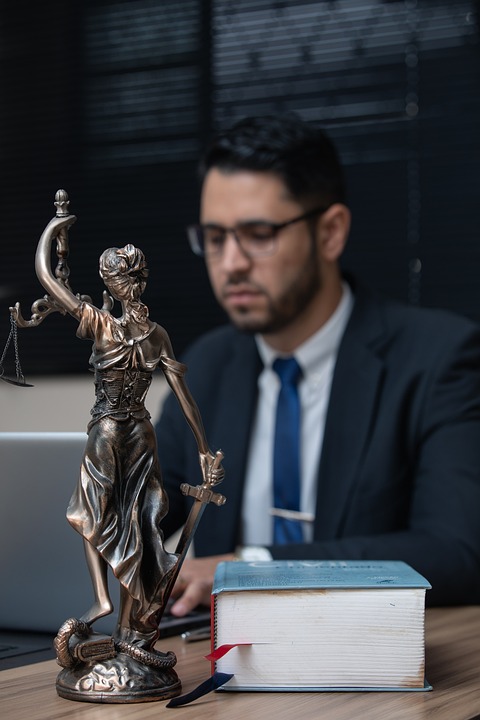Collision lawyer

A collision lawyer, also known as a car accident lawyer, plays a crucial role in representing clients who have been involved in motor vehicle accidents. These lawyers help victims seek compensation for damages and injuries sustained in collisions. In this comprehensive guide, we will explore the various aspects of collision law, the responsibilities of a collision lawyer, the legal processes involved, and the types of compensation a client might pursue. This information will provide a clear understanding of the importance of collision lawyers in the legal system, their role in accident claims, and how they can effectively assist those impacted by motor vehicle accidents.
Introduction to Collision Law
Motor vehicle collisions can range from minor fender-benders to serious accidents resulting in severe injuries or even fatalities. When a person is involved in such an event, they may be entitled to compensation if the accident was caused by someone else’s negligence. The area of law governing these incidents is referred to as collision law or personal injury law. This legal domain focuses on establishing liability and recovering damages for injured parties.
In many cases, determining liability in a car accident can be complex. Factors such as distracted driving, reckless driving, driving under the influence (DUI), and even weather conditions can influence the outcome of a case. Therefore, having a knowledgeable collision lawyer can be pivotal in proving fault, navigating insurance claims, and ensuring that the victim’s rights are protected.
The Role of a Collision Lawyer
A collision lawyer’s primary responsibility is to advocate on behalf of their client to obtain fair compensation for their losses. This compensation can cover various damages, including medical bills, property damage, lost wages, and pain and suffering. Below are key functions a collision lawyer performs:
1. Case Evaluation: The first step a collision lawyer takes is to assess the viability of a client’s case. They review the details of the accident, examine the police report, and gather preliminary information from witnesses or accident experts. This step helps the lawyer determine whether the client has a valid claim and how much compensation they might seek.
2. Investigating the Accident: A thorough investigation is crucial for building a strong case. The lawyer will often collaborate with accident reconstruction experts, gather photographic evidence, review traffic camera footage (if available), and consult with medical professionals to understand the extent of the injuries. This investigation helps to establish the fault and causality in the accident.
3. Dealing with Insurance Companies: Insurance companies often try to minimize payouts to accident victims. A collision lawyer acts as a buffer between the client and the insurance adjusters, negotiating on behalf of the client to secure fair compensation. They are familiar with the tactics used by insurers and can navigate the negotiation process to avoid lowball settlements.
4. Filing a Lawsuit: If a fair settlement cannot be reached through negotiations, the lawyer may file a lawsuit on the client’s behalf. This step involves drafting and filing legal documents, including the complaint that outlines the client’s case against the at-fault party. Once the lawsuit is filed, the case may proceed to discovery, where both sides exchange evidence, take depositions, and prepare for trial.
5. Representing Clients in Court: If the case goes to trial, the collision lawyer represents their client in front of a judge or jury. They present evidence, call witnesses, cross-examine the defense, and argue on behalf of the client. A strong trial lawyer will aim to secure the maximum compensation possible by proving the other party’s liability.
6. Settling the Case: In many cases, lawsuits are settled out of court. A settlement occurs when both parties agree on compensation before the trial concludes. An experienced collision lawyer will ensure that any settlement offer is fair and considers both current and future expenses related to the accident.
Types of Collision Cases Handled by a Collision Lawyer
Collision lawyers handle various types of motor vehicle accidents, each with its own unique legal challenges. Some of the most common types include:
1. Car Accidents: Car accidents are the most common type of collision case, often caused by negligent driving behaviors such as speeding, distracted driving, or driving under the influence of drugs or alcohol. Collision lawyers help clients navigate the complexities of insurance claims, medical bills, and determining fault.
2. Truck Accidents: Accidents involving large commercial trucks are more complex due to federal regulations governing the trucking industry and the significant damage these vehicles can cause. A collision lawyer may need to investigate the truck driver’s log, maintenance records, and the company’s compliance with safety standards to build a case.
3. Motorcycle Accidents: Motorcycle accidents frequently result in severe injuries because riders have less protection than car occupants. A collision lawyer in these cases focuses on proving liability, especially if the accident was caused by another driver’s negligence, such as failing to yield or not seeing the motorcyclist.
4. Pedestrian Accidents: Pedestrians hit by motor vehicles often suffer life-threatening injuries. In these cases, the lawyer needs to establish that the driver was at fault by demonstrating negligence, such as failing to follow traffic signals or speeding in pedestrian-heavy areas.
5. Bicycle Accidents: Similar to pedestrian accidents, bicycle collisions can result in severe injuries due to the lack of protection for the cyclist. A collision lawyer works to prove that the driver’s negligent actions—such as running a red light or not giving cyclists enough space—led to the accident.
Proving Negligence in Collision Cases
One of the most important aspects of a collision case is proving negligence. For a victim to recover compensation, their lawyer must demonstrate that the other party acted negligently and that this negligence directly caused the accident and resulting injuries. The following four elements must be proven:
1. Duty of Care: The plaintiff must show that the defendant had a legal duty to act in a way that would prevent harm to others. For instance, all drivers have a duty to follow traffic laws and operate their vehicles safely.
2. Breach of Duty: The lawyer must prove that the defendant breached their duty of care by acting negligently or recklessly. Examples of a breach include speeding, texting while driving, or running a red light.
3. Causation: The plaintiff must demonstrate that the defendant’s breach of duty caused the accident. This involves proving a direct link between the negligent behavior and the collision.
4. Damages: Finally, the plaintiff must show that they suffered damages as a result of the accident. Damages can include medical expenses, property damage, lost wages, and emotional distress.
Types of Compensation Available
Victims of motor vehicle accidents may be entitled to various types of compensation, depending on the severity of their injuries and the impact of the accident on their lives. Compensation can be divided into two categories: economic and **non-economic damages.
1. Economic Damages: These are quantifiable losses that can be calculated based on receipts, bills, and other documentation. They include:
Medical Expenses: The cost of immediate medical care, hospital stays, surgeries, medications, and ongoing treatment such as physical therapy.
Lost Wages: Compensation for income lost due to the inability to work during recovery, as well as future lost wages if the victim is unable to return to their previous job.
Property Damage: The cost to repair or replace the victim’s vehicle and any other damaged property.
2. Non-Economic Damages: These are subjective losses that are more difficult to quantify. They include:
Pain and Suffering: Compensation for physical pain and emotional distress caused by the accident and injuries.
Loss of Enjoyment of Life: If the victim is no longer able to participate in activities they once enjoyed due to their injuries, they may be entitled to compensation.
Emotional Distress: Victims may receive compensation for the psychological impact of the accident, such as anxiety, depression, or post-traumatic stress disorder (PTSD).
In some cases, punitive damages may also be awarded. These are intended to punish the defendant for particularly egregious or reckless behavior, such as driving under the influence of alcohol or engaging in dangerous driving practices.
Statute of Limitations
It is important for collision victims to be aware of the statute of limitations in their state. This law sets a time limit for filing a lawsuit, typically ranging from one to six years depending on the state and the nature of the accident. Failing to file within this time frame can result in the loss of the right to seek compensation.
A collision lawyer will ensure that all necessary legal actions are taken within the statute of limitations, protecting the client’s rights and preserving their opportunity to recover damages.
A collision lawyer is an essential advocate for individuals who have been involved in motor vehicle accidents. From investigating the cause of the accident to negotiating with insurance companies and representing clients in court, they play a pivotal role in ensuring that accident victims receive fair compensation for their injuries and losses. By understanding the legal process, proving negligence, and navigating the complexities of insurance claims, collision lawyers help their clients rebuild their lives after a traumatic event.
If you have been involved in a motor vehicle accident, seeking the assistance of an experienced collision lawyer is crucial for protecting your legal rights and securing the compensation you deserve. With their expertise, you can focus on your recovery while they handle the legal complexities on your behalf.


